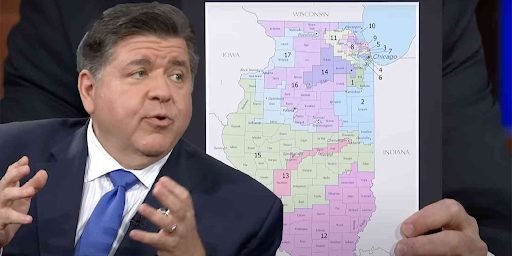In 2024, Wisconsin Governor Tony Evers turned a state Supreme Court victory into a political windfall, using the new liberal majority to ram through legislative maps that erased more than a decade of Republican dominance.
The shift came after Evers openly backed Janet Protasiewicz for the court, a race that flipped control to a 4–3 liberal majority. Within months, “fair maps” became the rallying cry — and the vehicle for Democrats to redraw the state’s political future.
The result was a seismic shift in Madison politics — flipping 10 Assembly seats and four Senate seats to Democrats, securing a legislative advantage that could last for years. Evers’ success came not from winning new voters, but from reconfiguring district lines. By leveraging the courts to bypass the GOP-controlled legislature, Democrats showcased the political power of favorable judicial rulings in redistricting.
Now, Republicans are deploying the same tactics — with Texas at the center of the fight. Texas GOP lawmakers are aggressively redrawing maps to tighten their grip on Congress and the state legislature, mirroring the precision Democrats have used in blue states to cement dominance. The political tension is so high that Texas Democrats have fled the state in protest, echoing Wisconsin’s Act 10 drama in 2011 when Democratic legislators left for Illinois to avoid a vote on Governor Scott Walker’s collective bargaining reforms. Then, it was about unions; now, it’s about political maps and control of Congress.
The July 2025 House seat breakdown underscores the scale of partisan consolidation. In high-population blue states, Democrats have virtually erased Republican representation:
- Pacific Region: 58 Democrats, 13 Republicans (AK, CA, HI, OR, WA)
- Mid-Atlantic: 43 Democrats, 23 Republicans (DE, MD, NJ, NY, PA, WV)
- Great Lakes: 33 Democrats, 37 Republicans (IL, IN, MI, MN, OH, WI)
- New England: 21 Democrats, 0 Republicans (CT, MA, ME, NH, RI, VT)
By contrast, many Republican-dominated states with zero Democrats — such as Alaska, Wyoming, and the Dakotas — have only one or two total seats, making “gerrymandering” accusations far less relevant. (RELEVANT: Congressman Says Wisconsin Sanctuary County Should Lose All Funding)
There are 9 blue states with zero Republican House seats, accounting for 27 congressional seats. In the New England states, Republicans hold none. Meanwhile, 12 red states have zero Democratic House seats, representing 30 congressional seats — but most of these states have only one or two districts.
This small-seat factor matters: in states like South Dakota, North Dakota, and Wyoming, there’s only one at-large district. States like Nebraska or West Virginia have delegations too small to draw competitive maps even if they wanted to. Where red states do have large delegations — Texas, Florida, Tennessee — Democrats still maintain a foothold. That’s why Texas is now seen as a turning point: one of the first major attempts by Republicans to eliminate Democratic seats on the scale blue states have achieved for years.
Other blue states are heavily tilted toward Democrats despite having large delegations that could allow for more balanced maps. California (43 D, 9 R), Washington (8 D, 2 R), Illinois (14 D, 3 R), and New Jersey (9 D, 3 R) are just a few examples where lines are drawn to keep Republicans at a permanent disadvantage.
The census advantage
The redistricting battle is inseparable from the fight over the U.S. Census. Many conservatives argue that counting noncitizens in population totals artificially boosts blue state representation in Congress and the Electoral College. (RELEVANT: Out-of-State Billionaires Propel Wisconsin Democratic Fundraising Surge)
Those extra seats can then be locked in through partisan maps, creating a cycle that entrenches Democratic majorities for an entire decade. For years, Republicans focused more on winning elections than on controlling the mapmaking process — but as the Texas fight shows, that era is ending.
































